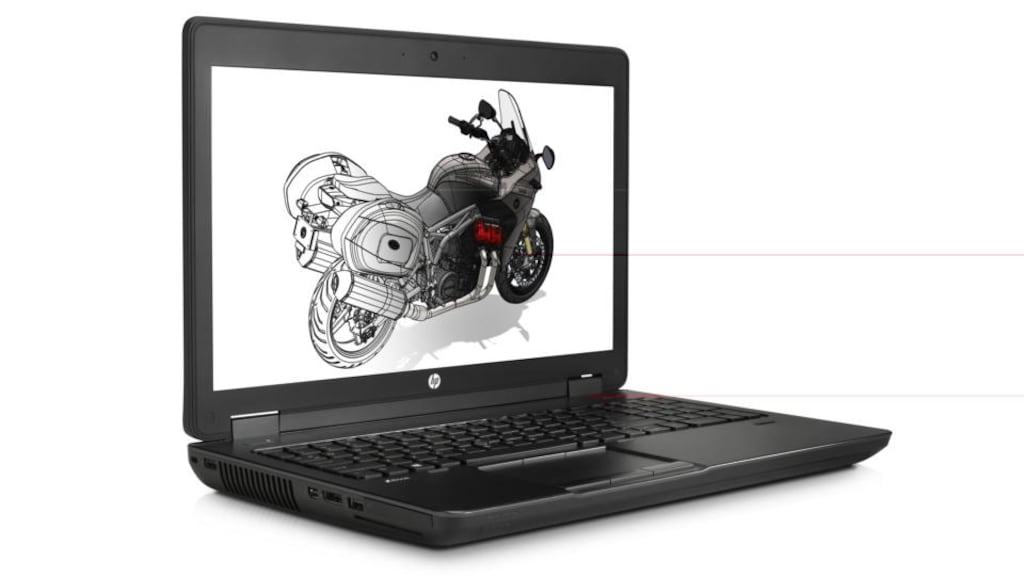The march of the MacBook has led to a whole new generation of clones trying to ‘out-sleek’ the slimline machine. They’ve had varying degrees of success, so it’s refreshing when a notebook-maker tries to go their own way.
The HP ZBook isn't going for looks at the expense of performance. It has an anodised aluminium case with a plastic edging that gives it more of a rugged look than your average ultrabook.
HP has built the device on Intel’s latest Broadwell processors. It comes with an i7 5600U 2.6GHz chip, one of the ultra-low voltage dual-core processors. On top of that, there are 16GB of RAM, more than most people will ever need for their everyday tasks.
When it comes to ports, there are also plenty of options. HP ditches the optical drive and instead offers a choice of four USB ports – three USB 3.0 and one USB 2.0 – a smartcard reader and VGA port.
There’s a secure digital card slot for transferring photographs directly to the internal storage on the PC. Hiding under the battery is a Sim card slot, so you can add a mobile broadband Sim for on-the-go working.
The version we tested was the 15U G2. That brings a screen with HD resolution but touch-free; the machine we tested came with Windows 7 – a downgrade option from Windows 8 – so the touchscreen would be surplus to requirements here. Touch-screen laptops aren’t for everyone; however, with Windows 10 looming, you may reconsider your options.
The good
As far as notebooks go, the HP ZBook performs well. That new chip means it will deal with most situations adequately – multitasking showed up no problems, programs performed as they should and there was no visible stuttering. The i7 chip included with the review model we tested was dual core rather than quad core, which could, however, trip it up on more power-intensive tasks in the future.
The ZBook has a built-in fingerprint reader that not only adds a second layer of security but is actually usable.
There are plenty of missteps in this area, but HP hasn’t made one here. The fingerprint reader actually works without you having to swipe over and over again, and set-up only took a few minutes. It takes a reading from two fingers, so there’s a second option if the first doesn’t read properly.
But during the course of this review we didn’t have to resort to the back-up or the password option.
There’s a decent-sized trackpad, complete with left and right mouse buttons. One of the biggest problems with trackpads in the past was that you could accidentally activate them while typing; in the ZBook’s case, it didn’t register the accidental palm press. There’s also a mouse stick in the centre of the keyboard if you want to disable the trackpad altogether.
The not so good
If you’ve become used to more compact machines, the ZBook will come as a bit of a shock. It may be pitched as an ultrabook, but it won’t trouble the MacBook Air or many of its sleek rivals. There’s a lot of case to balance out that 15in screen, which means the keyboard feels smaller than it actually is, while at the same time giving you a lot of laptop to rest your hands on. It’s a curious mix.
It may have been slimmed down from previous versions, but the ZBook is still a bit on the large side; we managed to squeeze it into a bag that usually deals with a 13in MacBook Air, but only just.
If you are looking for something that you can throw in your bag and go, this may not be the notebook for you.
Another thing to note is that the graphics performance isn’t quite as good if you try to load it with graphics-intensive games.
The rest
Battery life is average, at about five hours of continual use. It’s not amazing, but not the worst either. Perfectly adequate for a bit of work outside the office.
The verdict
HHH
This mobile workstation is a workhorse; it’s a good all-rounder, as long as you don’t ask too much of it.













